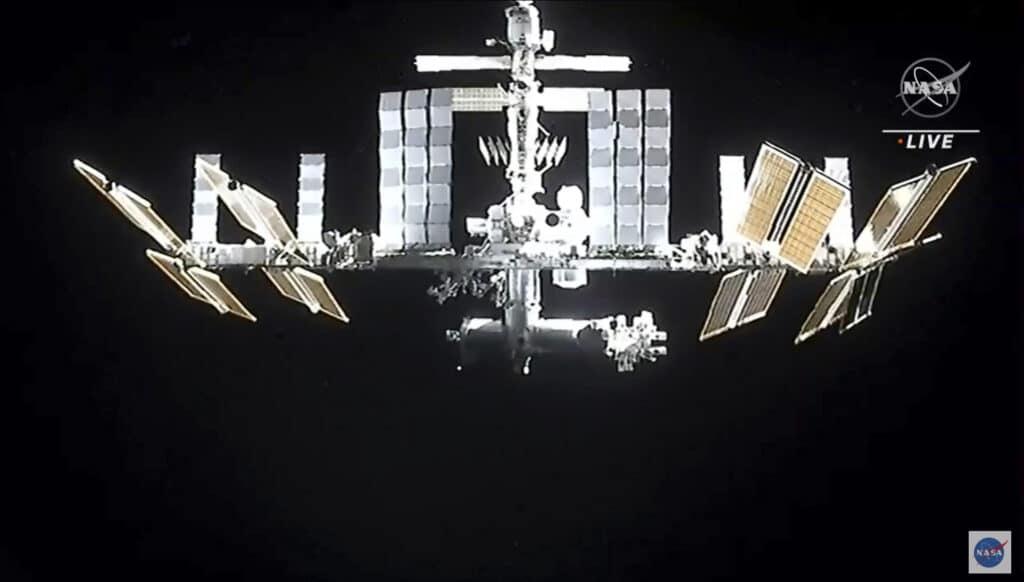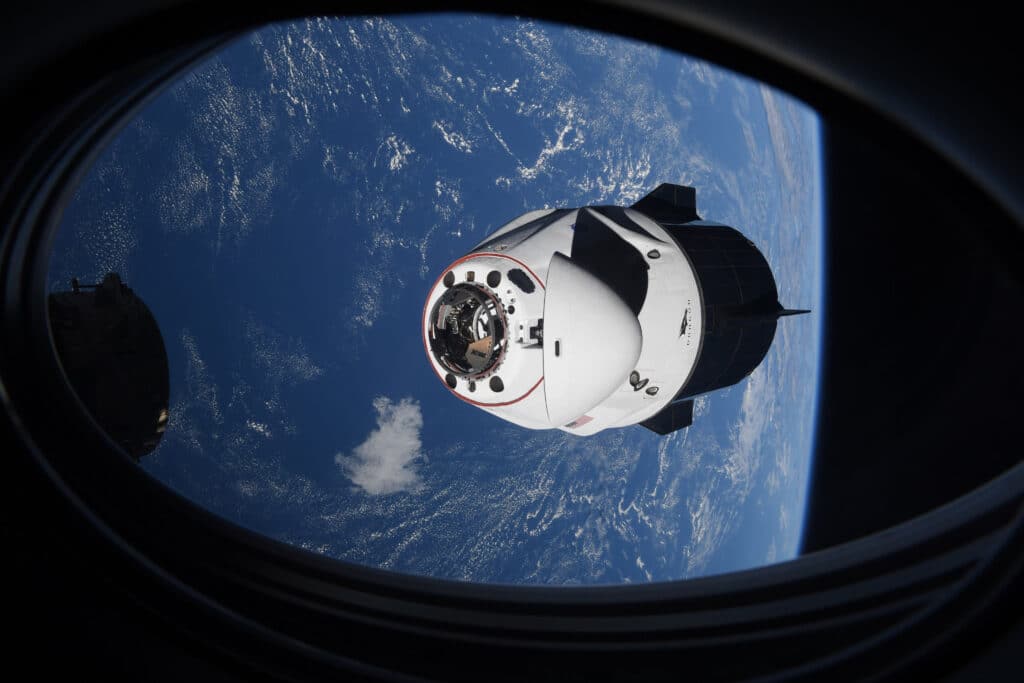Russia conducted a weapons test in space, blowing up an old Russian satellite, and now the 1,500 pieces of junk from it are threatening astronauts at the International Space Station. They had to briefly seek shelter in their docked capsules. The Associated Press has the story:
State Department says Russia was ‘reckless’ and ‘irresponsible’ with space weapons test
CAPE CANAVERAL, Fla. (AP) — A Russian weapons test created more than 1,500 pieces of space junk that is now threatening the seven astronauts aboard the International Space Station, U.S. officials said Monday.
The State Department confirmed that the debris was from an old Russian satellite destroyed by the missile strike.
“It was dangerous. It was reckless. It was irresponsible,” said State Department spokesman Ned Price.
Earlier Monday, the four Americans, one German and two Russians on board were forced to briefly seek shelter in their docked capsules because of the debris.

At least 1,500 pieces of the destroyed satellite were sizable enough to show up on radar and with telescopes, Price said. But countless other fragments were too small to track, yet still posed a danger to the space station as well as orbiting satellites.
Even a fleck of paint can do major damage when orbiting at 17,500 mph (28,000 kph). Something big, upon impact, could be catastrophic.
“We are going to continue to make very clear that we won’t tolerate this kind of activity,” Price said.
He said the U.S. has “repeatedly raised with Russian counterparts our concerns for a potential satellite test”.
NASA Mission Control said the heightened threat from the debris might continue for another couple days and continue to interrupt the astronauts’ science research and other work. Four of the seven crew members arrived at the orbiting outpost Thursday night.
NASA astronaut Mark Vande Hei, who’s midway through a yearlong mission, called it “a crazy but well-coordinated day” as he bid Mission Control good night.
“It was certainly a great way to bond as a crew, starting off with our very first work day in space,” he said.
The U.S. Space Command said it was tracking the field of orbiting debris. NASA had made no comment by late afternoon, and there was no word late Monday from Russia about the missile strike.
A similar weapons test by China in 2007 also resulted in countless debris. One of those pieces threatened to come dangerously close to the space station last week. While it later was dismissed as a risk, NASA had the station move anyway.
Anti-satellite missile tests by the U.S. in 2008 and India in 2019 were conducted at much lower altitudes, well below the space station.
Until Monday, the Space Command already was tracking some 20,000 pieces of space junk, including old and broken satellites from around the world.
Jonathan McDowell of the Harvard-Smithsonian Center for Astrophysics said it will take days if not weeks and months to catalogue the latest wreckage and confirm their orbits. The fragments will begin to spread out over time, due to atmospheric drag and other forces, he said in an email.
The space station is at especially high risk because the test occurred near its orbit, McDowell said. But all objects in low-Earth orbit — including China’s three-person space station and even the Hubble Space Telescope — will be at “somewhat enhanced risk” over the next few years, he noted.
John Kirby, the Pentagon press secretary, said the most immediate concern was the space debris. Beyond that, the United States is monitoring “the kinds of capabilities that Russia seems to want to develop which could pose a threat not just to our national security interest but to the security interests of other space-faring nations.”
Earlier in the day, the Russian Space Agency said via Twitter that the astronauts were ordered into their docked capsules, in case they had to make a quick getaway. The agency said the crew was back doing routine operations, and the space station’s commander, Russian Anton Shkaplerov, tweeted: “Friends, everything is regular with us!”
But the cloud of debris posed a threat on each passing orbit — or every 1 1/2 hours — and all robotic activity on the U.S. side was put on hold. German astronaut Matthias Maurer also had to find a safer place to sleep than the European lab.
__
AP reporters Matthew Lee and Robert Burns in Washington contributed.
By MARCIA DUNN
The Associated Press Health and Science Department receives support from the Howard Hughes Medical Institute’s Department of Science Education. The AP is solely responsible for all content.
Read more tech & science news







